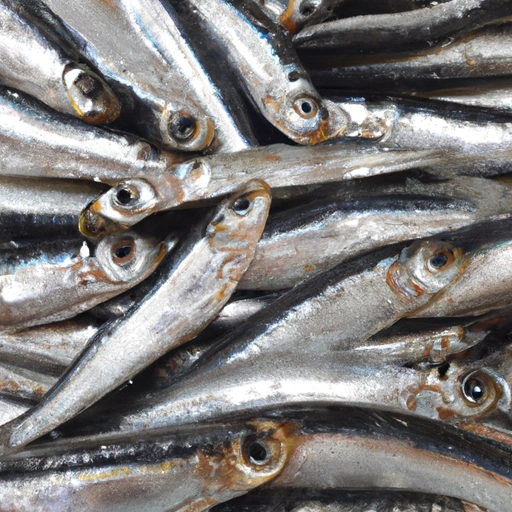Sardine
Description

Sardines are small, oily fish that are commonly found in the Atlantic and Pacific Oceans, as well as in the Mediterranean Sea. They are named after the Italian island Sardinia, where they were once abundant. Sardines are typically canned in oil, water, or sauces, but they are also available fresh or frozen. Rich in nutrients, sardines are valued for their versatility in various culinary traditions.
Common uses
Sardines are commonly used in salads, sandwiches, and as a garnish on pizzas and pastas. They are also served as appetizers or snacks, often accompanied by crackers or toast.
Nutritional value
Calories
A 3.75-ounce (92 grams / about 1/2 cup) can of sardines packed in oil contains approximately 191 calories (800 kilojoules).
Protein
That same serving size provides about 23 grams of protein, making sardines an excellent protein source.
Fat
Sardines are rich in healthy fats, particularly omega-3 fatty acids, with roughly 10 grams of total fat per serving.
Carbohydrates
Sardines contain minimal carbohydrates, with less than 1 gram per serving.
Vitamins
They are an excellent source of vitamin B12, providing 8.2 micrograms, or 343% of the Daily Value (DV). Sardines also contain vitamin D, with 4.8 micrograms, or 24% of the DV.
Minerals
Sardines are high in minerals such as calcium, providing 351 milligrams, or 27% of the DV; and selenium, with 48.5 micrograms, or 88% of the DV, per serving.
Health benefits
The omega-3 fatty acids found in sardines contribute to heart health by reducing inflammation and lowering blood pressure. The high protein content aids in muscle building and repair, while vitamins and minerals support bone health and the immune system.
Potential risks
Some people may be allergic to fish, including sardines. Additionally, sardines can contain mercury and other contaminants, although generally in lower levels compared to larger fish. Overconsumption should be avoided to minimize exposure to these substances.
Common recipes
Sardines are used in a variety of dishes such as sardine pasta, fisherman's eggs, and Caesar salads with sardines. They are also a key ingredient in traditional recipes like Portuguese sardinhas assadas and Moroccan sardine balls.
Cooking methods
Sardines can be grilled, broiled, sautéed, or even eaten raw in certain preparations. They are often preserved by smoking or canning.
Pairing with other ingredients
The strong flavor of sardines pairs well with acidic ingredients like lemon and tomato, as well as with bold spices and herbs like garlic, parsley, and chili flakes.
Summary
Sardines are a nutritious and widely available seafood ingredient that can be used in a diverse array of dishes. They offer substantial health benefits, but should be consumed in moderation due to potential risks associated with contaminants. As an essential component in various regional cuisines, sardines add depth and flavor to countless recipes.